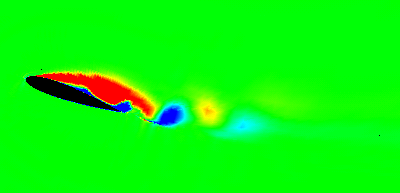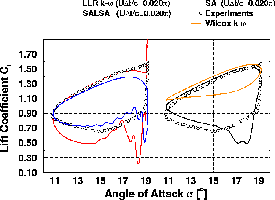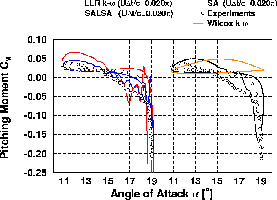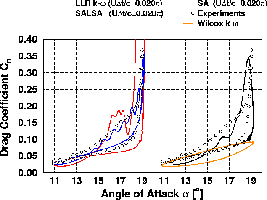
| Reynolds number | 1.95*106 |
| Mach number | 0.29 |
| mean angle of attack | 15o |
| pitching angle | 4.2osin(wt) |
| reduced frequency (k=0.5wLref/Uref) | 0.1 |
| A.R. Piziali: An experimental investigation of 2D and 3D oscillating wing aerodynamics for a range of angles of attack including stall, NASA TM 4632, 1994. | |
LLR k-w: ANIM.GIF(1.26M), MPEG(280K), SALSA: ANIM.GIF(560K), MPEG(5.6M), AVI(6.3M)
(the last two SALSA-movies show an animated lift vs. angle of attack graph next to the vorticity contours)
Turbulence Modelling


